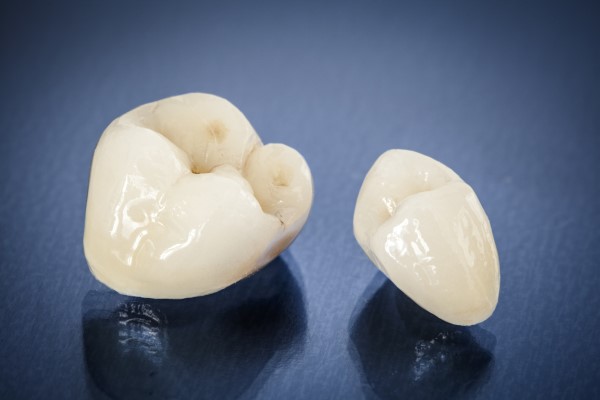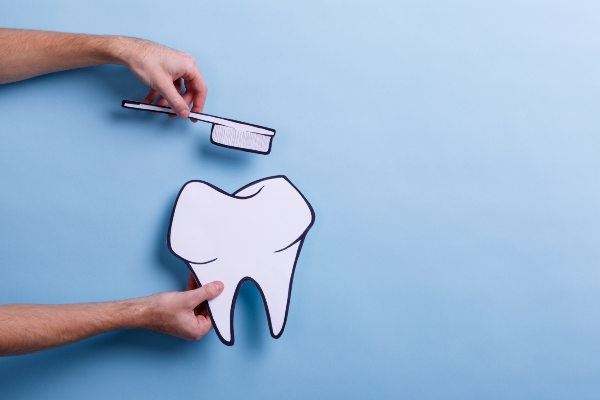Dental Crown to Restore a Damaged Tooth

A tooth with significant damage will need a dental crown or cap. This restoration can restore the form and function of your tooth. Getting a large filling or a root canal will need a cap to protect and strengthen the tooth. If you want to know how a dentist will use a dental crown to restore your damaged dentition, here are the details.
Why dentists use dental crowns
A dentist will bond a dental crown to a tooth with a severe crack or decay. The cap will cover the exposed part of the damaged tooth above the gumline. It is a custom-fit restoration. Traditional crowns are fabricated in dental labs. This often takes weeks to finish. With the computer-aided design, a patient can get a dental crown in just one visit.
A dentist can provide a crown to prevent a tooth from more damage. The cap can support a tooth with a large filling and restore a broken tooth’s distorted shape. The dentist will cement the dental crown over the tooth. This will hold the tooth together and prevent the damage from worsening. The cap can also restore the alignment, function, appearance, and shape of the broken tooth.
A dental crown will look natural. The dentist will make sure the crown will blend with the patient’s surrounding natural teeth. Materials for making crowns are durable. This allows the crowns to take the pressures of biting and chewing.
The process of crown placement
A dentist will clean the patient’s teeth and gums first. Any dental issue will receive treatment first. Such issues are cavities and gum infection. The dentist will then anesthetize the area around the tooth. Trimming off the sides of the tooth will come next.
The dentist will rebuild the missing part of the tooth. This will make the tooth a better foundation for the crown. The dentist will take impressions of the treated tooth. The lab will use these impressions to construct the crown. It will take two weeks for the lab to make traditional caps. The patient will wear temporary crowns while waiting.
The dentist will take off the temporary crown during the next visit. Then, the dentist will place the permanent crown over the tooth. Adjustments may be necessary. This will ensure a good fit while biting, chewing, speaking, and laughing. Then, the dentist will cement the crown over the tooth.
The dentist will take a curing light and harden the cement. This will secure the dental crown over the weakened tooth. The patient will leave the dental clinic with a restored tooth. This restoration will last for a lifetime with proper care and maintenance.
Possible problems with a dental crown
A new dental crown may feel uncomfortable at first. It may even be sensitive after the anesthetic fades. A crowned tooth still has an intact nerve in it. This nerve is still capable of experiencing temperature sensitivity. Pain often indicates that the crown’s position is too high on the treated tooth.
In some cases, dental cement may wash out from underneath the crown. This means that the substance binding the crown to the tooth is disappearing. The crown will loosen, which can invite bacteria to enter the tooth and cause damage. The crown may also fall off. Deteriorating dental cement can cause this problem. Once the crown comes off, the patient must clean the tooth and replace the crown right away.
Porcelain or porcelain-fused-to-a-metal crown can chip off sometimes. Dentists can use composite resin to repair a small chip. This can happen while the patient still wears the chipped crown. Severe chipping will need a crown replacement.
Some patients experience an allergic reaction to dental crowns. The metal component in some crowns can trigger this reaction. Allergic reactions to porcelain are rare. A dark line can also appear next to the gumline of the crowned tooth. This is not appealing to look at. The dentist may need to replace the entire crown with a pure porcelain one.
A dental crown can bring back your youthful, radiant smile
Dental damage can cause you to hide your smile and try to avoid human interaction. It can also cause you pain whenever you eat, drink, or speak. Proper treatment and a dental crown can help you regain your smile and oral health. Your dentist can perform a thorough dental check to see if you are a good candidate for this treatment.
Are you considering getting a dental crown in the Delray Beach area? Get more information at https://www.palmbeachdentistry.com.
Check out what others are saying about our dental services on Yelp: Dental Crowns and Dental Bridges in Delray Beach, FL.
Recent Posts
A dental crown is often used to treat dental cavities, especially when the cavity is too large or too deep for a dentist to repair with a dental filling. This review provides a detailed look at when a dental crown is needed to repair a tooth that has a cavity and how a dental crown…
It is imperative to act quickly and responsibly after a dental crown falls out. Not all instances of a lost dental crown are an emergency, but prompt care is always strongly encouraged to reduce the risk of additional complications such as increased tooth sensitivity and pain, as well as oral infection.The following is a five-step…
The cosmetic appeal of dental crowns rests on their ability to sheathe natural teeth. A dental crown is also a custom restoration, meaning that it fits the underlying tooth like a glove. It covers the visible part of the tooth, from the biting surface to the base.These qualities make a dental cap one of the…
A dental crown is a type of dental restoration that covers a damaged or weakened tooth and improves its size, shape, health, and appearance. There are certain signs a dentist may look for to determine whether a dental crown is the best form of restoration for a patient or if another restoration may be more…


